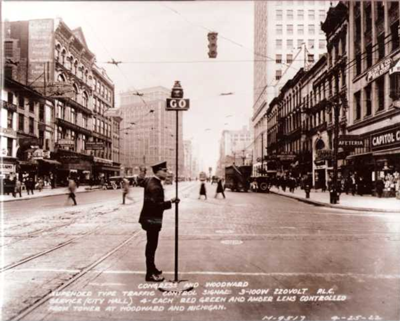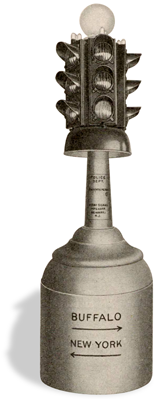Traffic lights are descended from 19th-century railway signals, which traditionally had three positions: stop, proceed with caution, and all clear. These would be done with red, yellow, and green lamps, or, in the alternative, with semaphore signals. The first traffic light, installed in London in 1868, was actually a modified railway semaphore signal. (That traffic light lasted a few weeks before it malfunctioned and blew up, injuring the policeman charged with operating it.)


